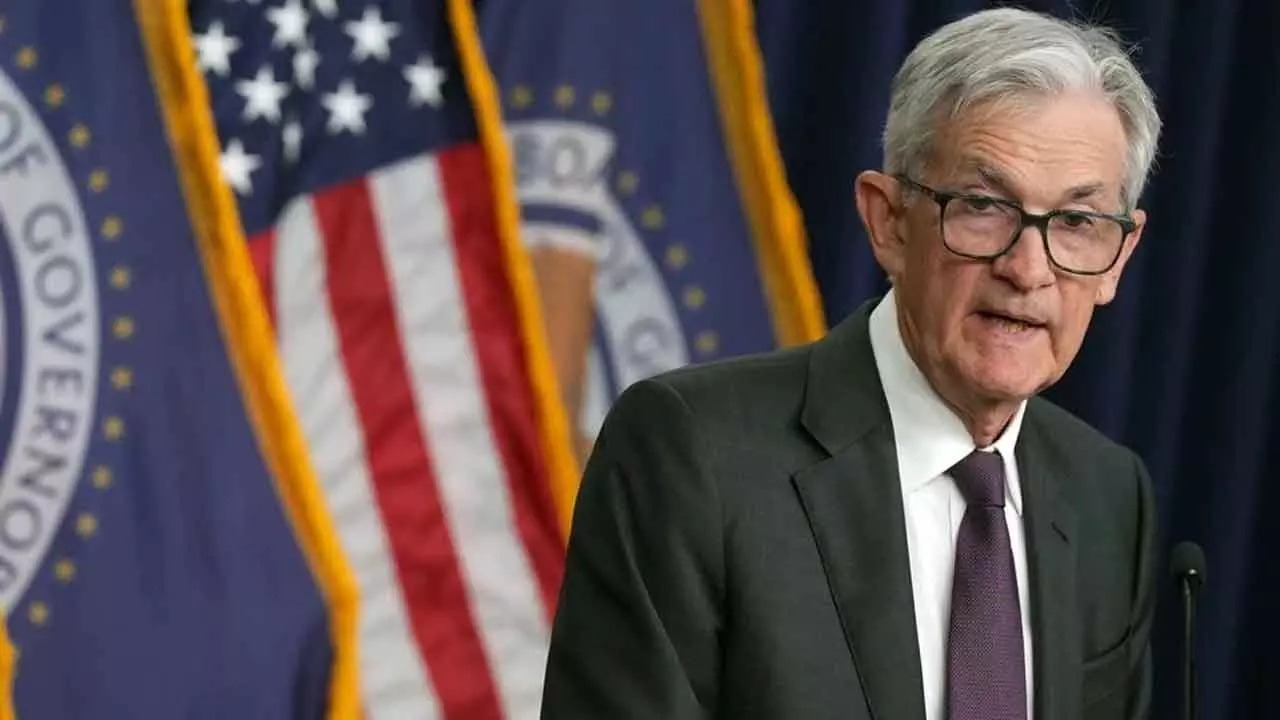US Federal Reserve Holds Rates for Fourth Time: Navigating Trump Tariffs and Inflationary Pressures
The US Fed keeps interest rates unchanged for the fourth consecutive meeting, citing elevated economic uncertainty and inflation risks, particularly from Trump's tariffs. Explore the key highlights and market reactions from the June 2025 FOMC decision.
US Federal Reserve Holds Rates for Fourth Time: Navigating Trump Tariffs and Inflationary Pressures

The financial world held its breath on Wednesday, June 18, 2025, as the US Federal Reserve's Federal Open Market Committee (FOMC) delivered its latest verdict: benchmark interest rates would remain unchanged. This marks the fourth consecutive meeting where the US central bank has opted to hold rates steady, a policy stance it has largely maintained since President Donald Trump began his second term in the White House earlier this year.
The decision, keeping the federal funds rate in the range of 4.25% to 4.5%, reflects a cautious approach from the Fed, citing "diminished yet elevated economic uncertainty" within the US economy. While some of the immediate anxieties may have receded, the lingering effects of global trade dynamics and domestic policy continue to shape the Fed's outlook.
Interestingly, despite the current hold, the Fed's quarterly "dot plot" projections offer a glimpse into future intentions. The median forecast from Federal Reserve officials now anticipates a 50 basis point (0.5%) interest rate cut before the end of 2025, suggesting that while the immediate future calls for stability, the longer-term view leans towards easing monetary policy.
Here are five key takeaways from the latest US Fed meeting:
1. Rates Remain Anchored: The core decision was to maintain the current interest rate range. This stability, for the fourth time since January 2025, signals the Fed's desire to observe economic trends more closely before making any significant moves. The official statement highlighted a robust labor market with low unemployment, yet acknowledged that inflation remains "somewhat elevated," projecting a slightly hawkish undertone where the risk of higher inflation still exists.
2. Lingering Economic Uncertainty: Both the FOMC's official statement and Chairman Jerome Powell's subsequent press conference underscored the persistence of economic uncertainty. A significant contributor to this, as explicitly stated by Chairman Powell, is the impact of tariffs imposed by US President Donald Trump. While the peak of this uncertainty was noted in April 2025, it continues to be a factor influencing the Fed's deliberations, even if it has somewhat "diminished."
3. Inflationary Concerns Persist: Despite healthy employment figures and a resilient labor market, the Fed continues to flag inflation as a key risk. The FOMC's statement noted that "inflation remains somewhat elevated." Chairman Powell further cautioned that "goods inflation readings will rise over the course of the summer," indicating that the effects of tariffs are expected to translate into higher consumer prices in the coming months.
4. A Shifting Labor Market Landscape: Powell provided a nuanced view of the US labor market, highlighting a concurrent softening of labor demand and a diminishing supply of workers, largely attributed to declining immigration numbers. While job creation has slowed, the unemployment rate has remained remarkably stable, hovering around 4.2-4.3%. Powell described this as an "equilibrium" where fewer people are being laid off, contributing to the stability of unemployment figures despite a slower pace of new job generation.
5. Markets' Mixed Reaction: The immediate reaction from US stock markets was a dip as Chairman Powell began his press conference. The Dow Jones Industrial Average, Nasdaq Composite, and S&P 500 all saw intraday declines, reflecting investor uncertainty following the Fed's decision to hold rates and Powell's comments on inflation risks. However, some indices pared their losses by the market close, indicating a mixed sentiment as investors digested the details of the policy announcement. The Bloomberg US Dollar Spot Index saw a slight rise, reflecting the continued strength of the dollar in this uncertain economic climate.
As the US economy navigates through a period of persistent, albeit somewhat reduced, uncertainty, the Federal Reserve's steady hand on interest rates suggests a watchful waiting approach. All eyes will now be on upcoming economic data, particularly inflation figures and labor market indicators, to see if they pave the way for the anticipated rate cuts later in the year.

